OpenID Connect Single Sign-On (SSO) Magento Extension By Gluu#

The oxd OpenID Connect single sign-on (SSO) plugin for Magento enables you to use a standard OpenID Connect Provider (OP), like Google or the Gluu Server, to authenticate and enroll users for a Magento site.
Magento Demo Video#
You can watch a video demo of the Magento plugin installation and configuration here. In the video we use a Gluu Server as the OpenID Provider.
Requirements#
In order to use the Magento Extension, you will need a Magento site, standard OP (like Google or a Gluu Server) and an active oxd server.
-
This plugin is compatible with Magento versions: 1.5 - 1.9.2
-
If you prefer to have your own OP server, you can deploy the free open source Gluu Server. Otherwise we recommend using Google
-
You will need a valid license to start the oxd server. You can get a license and a $50 credit by signing up on the oxd website
Plugin Installation#
Download the Plugin#
You can either download Magento Plugin from the Github source or Magento marketplace.
Disable cache#
To Install Magento plugin, you have to disable cache in Magento Admin console
-
Log into Magento Admin Panel and in the menu click on
System>Cache Management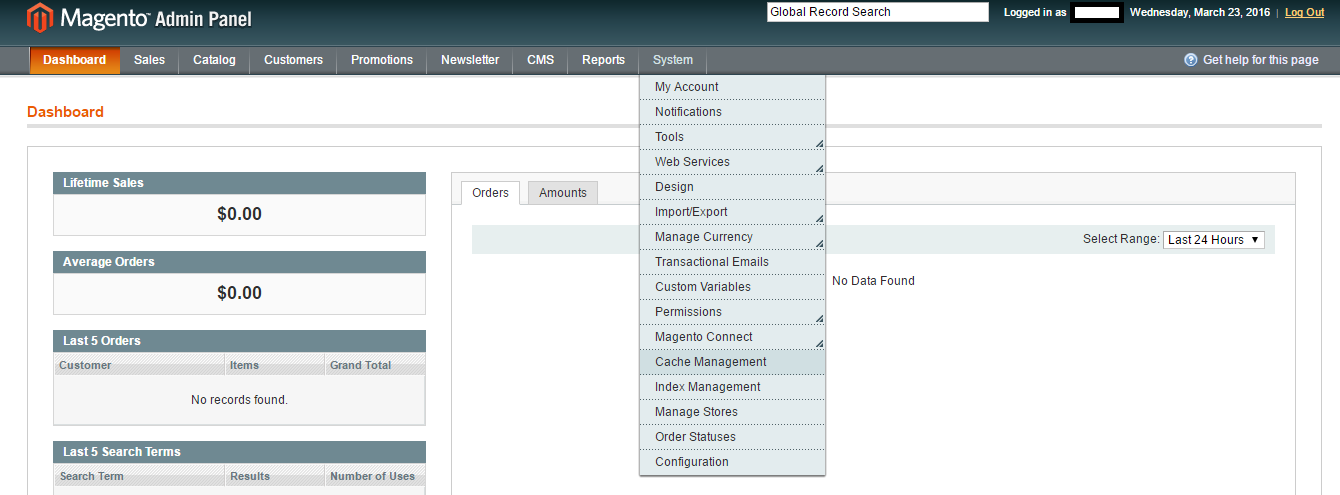
-
Check
select alloption to select all cache type and setActiondrop down menu to disable and click on submit button
Upload Plugin#
-
Log in to Magento Admin Panel and navigate to
System>Magento Connect>Magento Connect Manager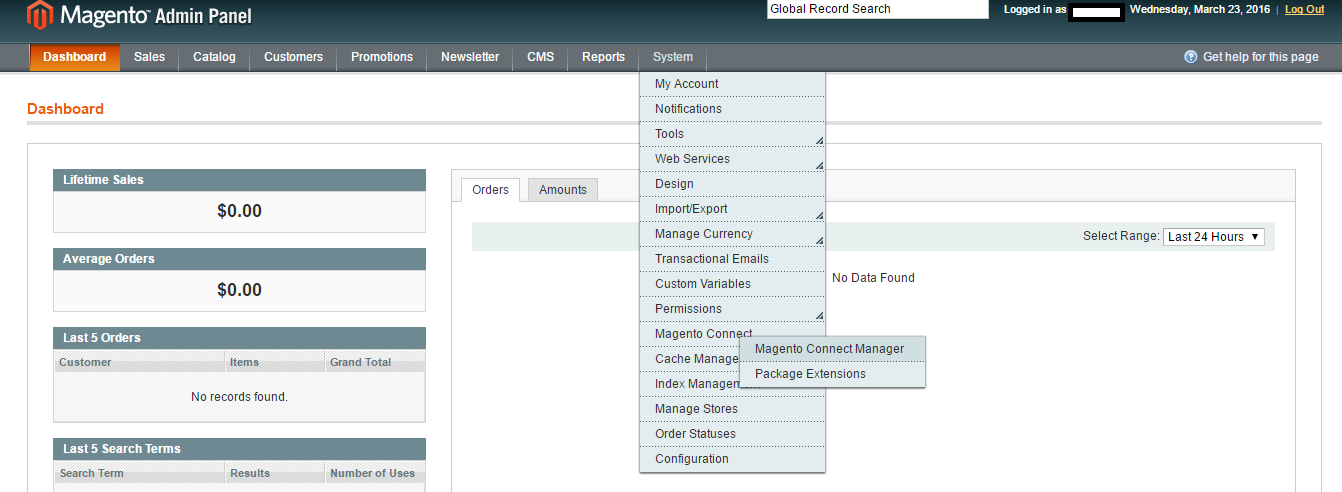
-
Select the downloaded plugin file and click on upload button
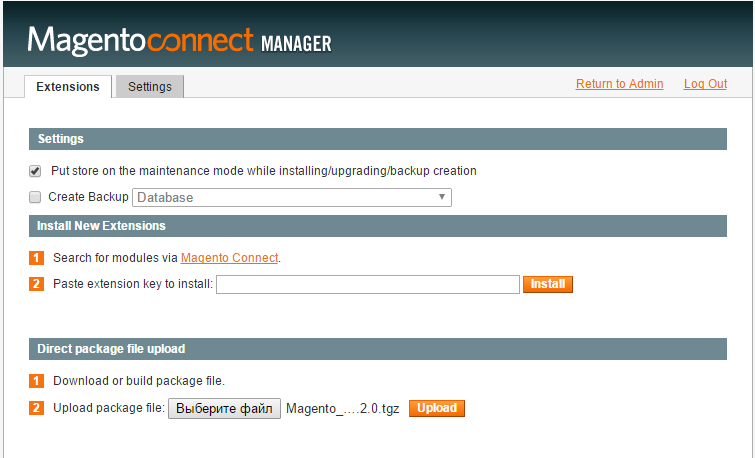
-
When the extension is successfully installed, return to the admin panel
!!! Note: The extension will be activated automatically.
-
Log into Magento Admin Panel and navigate to
OpenID Connect>Open extension page
Plugin Configuration#
In your Magento admin dashboard, you should now see the OpenID Connect tab in the left-hand menu. Click the link to navigate to the General configuration page.
General#
In your Magento admin menu panel, you should now see the OpenID Connect menu tab being displayed.
Click the link to navigate to the General configuration page:
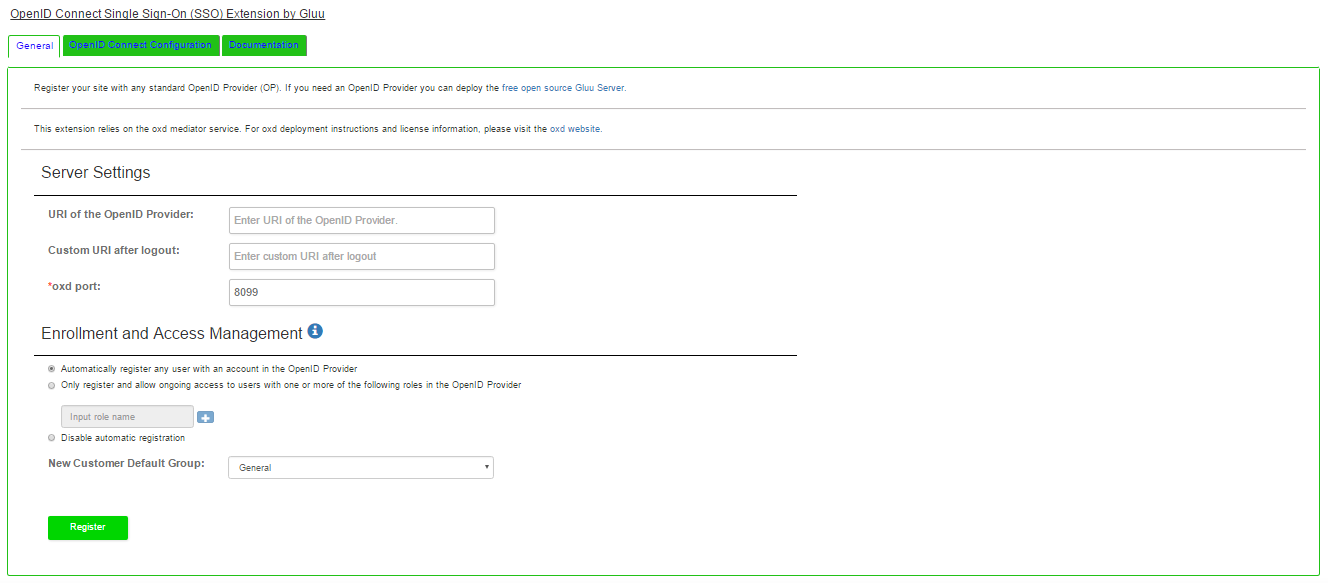
Server Settings#
In the server settings section of the plugin configuration page you will need to enter some information about your OP, your oxd server, and where you want to redirect users after logout.
A short description of each field follows:
-
URI of the OpenID Provider: Provide the URI of the OpenID Connect Provider here. If you are using Google as your OP, this will simply be
https://accounts.google.com. If you are using another OP it will be something likehttps://idp.example.com -
Custom URI after logout: Provide a URL for a landing page to redirect users after logout of the magento site, for instance
https://example.com/thank-you. If you don't have a preferred logout page, we recommend simply entering the URL of your website homepage URL. If you leave this field blank the user will see the default logout page presented by Magento -
oxd port: Enter the oxd-server port, which you can find in your
oxd-server/conf/oxd-conf.jsonfile -
Click
Registerto continue
If your OpenID Provider supports dynamic registration no additional steps are required.
If your OpenID Connect Provider does not support dynamic registration (like Google),
after clicking register two additional fields will be exposed where you need to enter
your client_id and client_secret.
Both values need to be obtained from the OP. To generate your client_id and client_secret
use the redirect URI: https://{site-base-url}/index.php?option=oxdOpenId.
Note
If you are using a Gluu server as your OpenID Provider, you can make sure everything is
configured properly by logging into to your
Gluu Server, navigate to the OpenID Connect > Clients page. Search for your oxd id.
If you are able to find your oxd ID in OP, everything worked.
Enrollment and Access Management#
In the enrollment and access management section of the plugin configuration page you can decide, (1), how new user registration will be handled, and, (2), what role new users will receive upon registration.
-
You have three options for how new user registrations are handled:
-
Automatically register any user with an account in the OpenID Provider: By setting registration to automatic, any user with an account in the OP will be able to dynamically register for an account on your Magento site
-
Only register and allow ongoing access to users with one or more of the following roles in the OP: Using this option, you can limit registration to users that have a specified role in the OP, for instance
magento. Note: this is not configurable in all OP's. It is configurable if you are using a Gluu Server. Follow the instructions below to limit access based on an OP role. Each time the user authenticates they will need to have this scope present in order to be approved for access (i.e. if you remove this scope from the users profile in the OP, the user would be denied access) -
Disable automatic registration: If you choose to disable automatic registration, you will need to manually add a user in magento for each person you want to have access. Make sure that when you add the user in magento, you use the same email that they have registered in the OP
-
New User Default Role: Use this field to specify which role to give to new users upon registration. If you have automatic registration set to disabled, you will have the opportunity to specify the users role during manual account creation
Role Based Enrollment#
In order to implement role based enrollment, you will need to make changes in both the plugin and the Gluu Server.
Perform the following in the Plugin:
- In the Enrollment and Access Management section, choose the option:
Only register and allow ongoing... - Add a name for the role want to use to enforce access (e.g.
magentoorwebsite) - Save the configuration
- Navigate to the OpenID Connect Configuration tab
- In the User Scopes section, check the box for
permission - Save your settings
Perform the following in your Gluu Server:
- Navigate to your Gluu Server admin GUI ("oxTrust")
- Click the
Userstab in the left hand navigation menu - Select
Manage People - Find the person(s) who should have access
- Click their user entry
- Add the
User Permissionattribute to the person and specify the same value as in the plugin. For instance, if in the plugin you specify that enrollment should be limited to users with role =magento, then you should also haveUser Permission=Magentoin the user entry. See a screenshot example - Update the user record
Now, only users with the role Magento in the Gluu Server will be able to gain access to your magento site.
OpenID Connect Configuration#
Navigate to the OpenID Connect Configuration tab to set your preferences for scopes and authentication.
User Scopes#
Scopes are groups of user attributes that are sent from the OP to the application during login and enrollment. By default, the requested scopes are profile, email, and openid. If you want more information about the users, you can request additional scopes.
To view your OP's available scopes, open a web browser and navigate to https://<hostname>/.well-known/openid-configuration. For example, if you are using Google the the OP, you can see the available scopes in the Google's OP configuration.
If you are using a Gluu server as your OpenID Provider, you can view available scopes by navigating to the OpenID Configuration page as described above, or within oxTrust by navigating to OpenID Connect > Scopes.
Authentication#
In the authentication settings, you have two options:
- Bypass the local Magento login page and send users straight to the OP for authentication: If you would like to bypass Magento's default login page and send users straight to the OP, check this box (recommended). When this option is left unchecked users will see the following screen when trying to login:

- Select ACR:
acris an OpenID Connect specific value that enables applications to request a specific type of authentication from the OP, e.g. SMS based two factor authentication, or FIDO U2F tokens. If you are using Google as your OP, you will have to accept their default authentication mechanism. If you are using a Gluu Sever, you will be able to request any supported form of authentication. To view the OP's supported ACR values, navigate to your OpenID Provider configuration page,https://<hostname>/.well-known/openid-configurationand findacr_values. In theSelect acrfield you can choose your preferred authentication mechanism. IfSelect acrisnone, users will be sent to pass the OP's default authentication mechanism.
OP Configuration#
Gluu Server Configuration#
If you are using a Gluu Server as your OP, you will need to configure Gluu to release the email claim. You can do so by following the below steps:
-
Log in to your Gluu Server dashboard ("oxTrust") and navigate to
OpenID Connect>Scopes -
Find the
emailscope and click on it -
Set the default scope field to
True -
If
Emailis not already added to theClaimsfield, click theAdd Claim, search for email, and add it
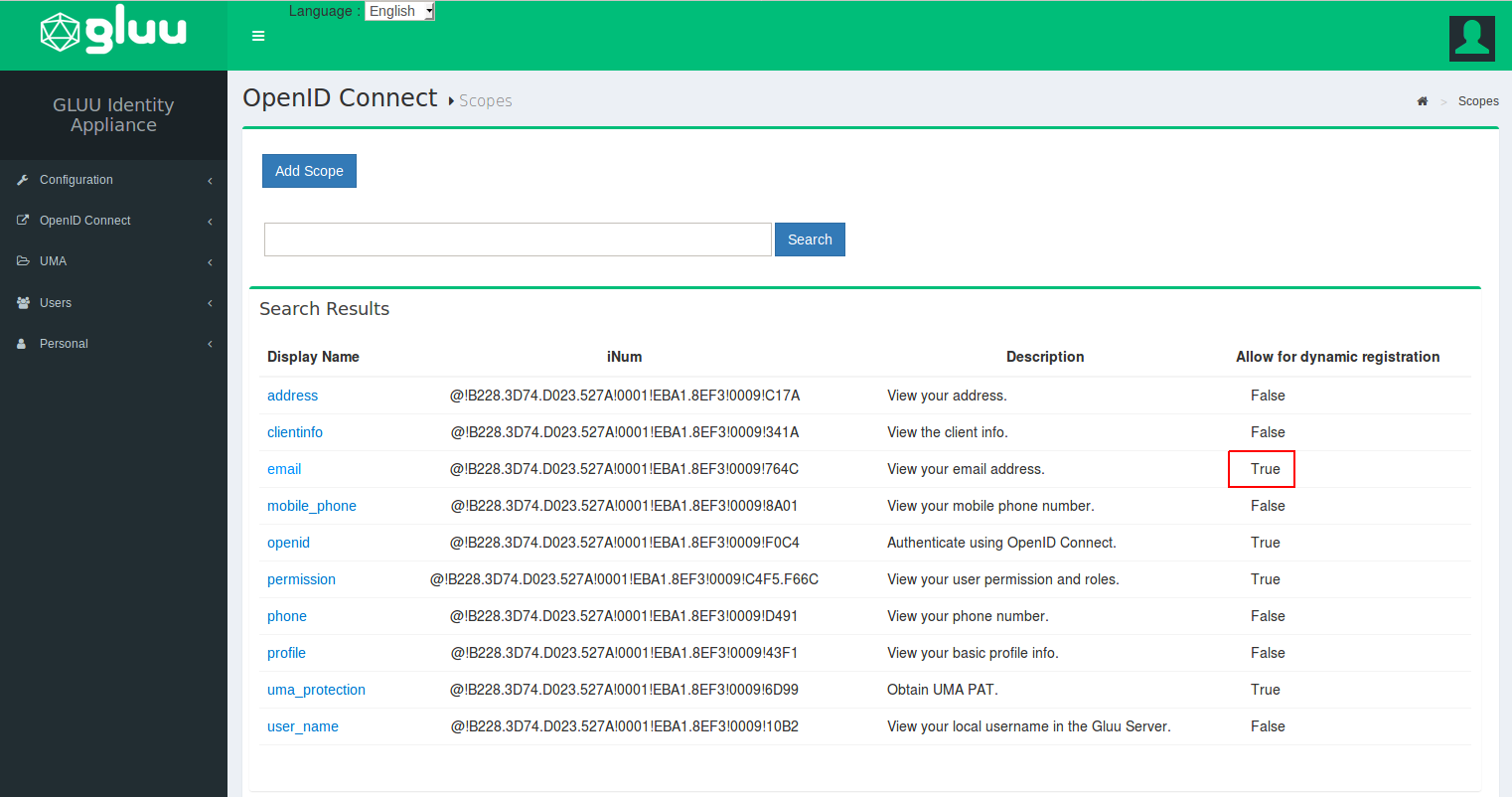
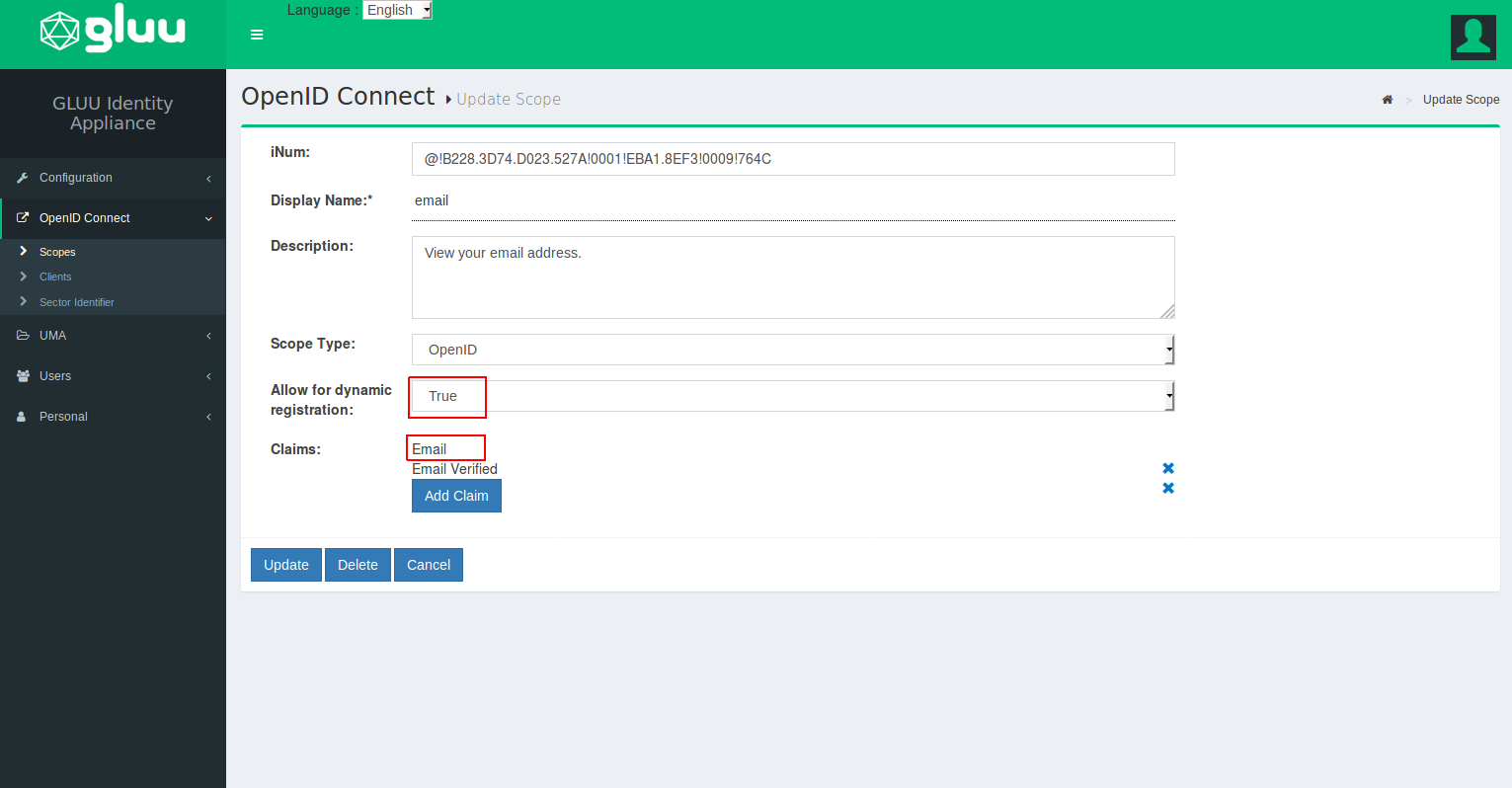
- Now navigate to
Configuration>Attributesand make sure that theEmailattribute is set toActive. If it is not, click on theemailattribute and scroll down to theStatusfield where you can change the value to Active. Click update
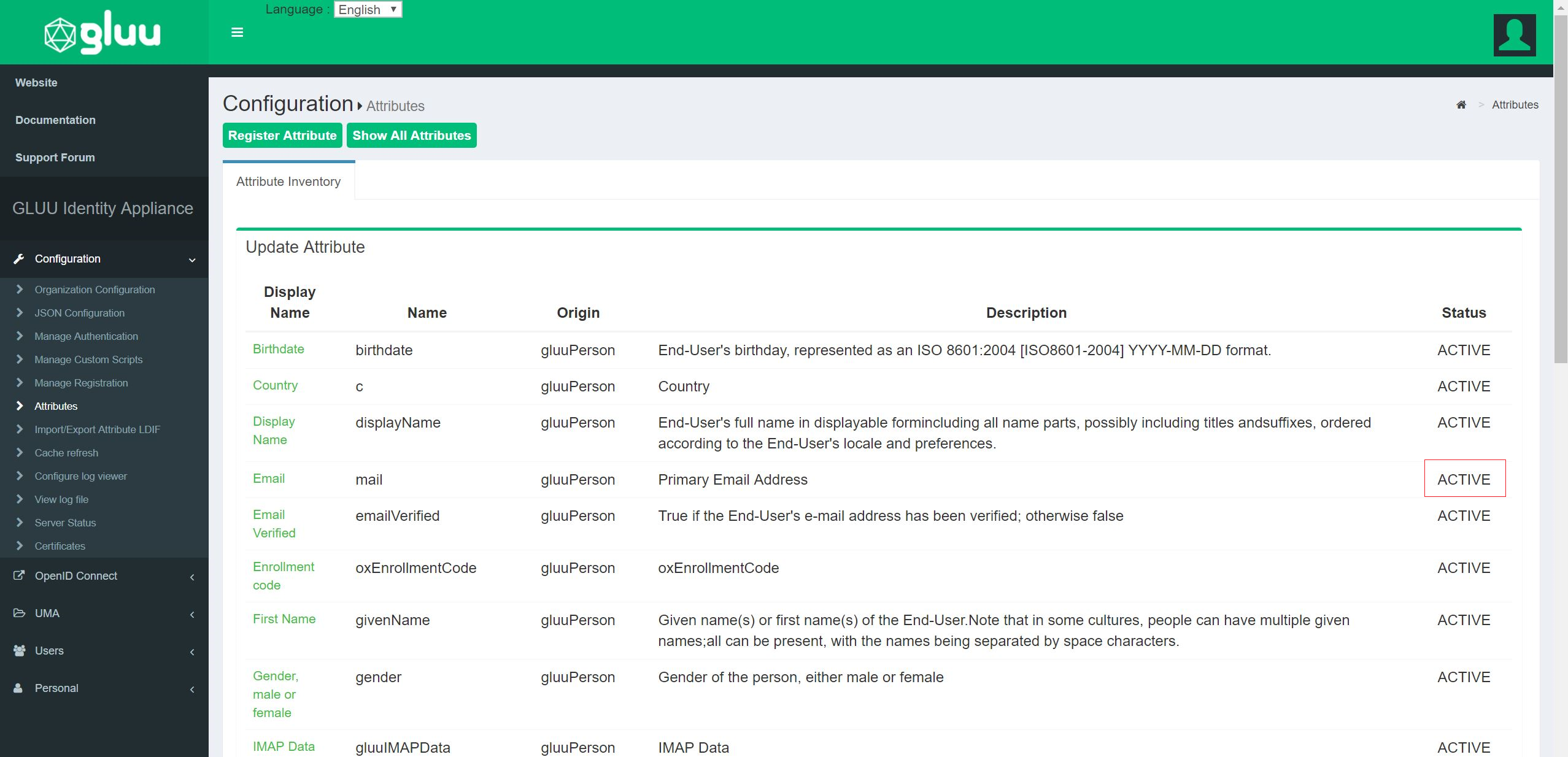
Google Configuration#
To use Google as the OP, you will need to obtain a Client ID and Secret at Google.
To generate your client_id and client_secret at Google use
the redirect uri: https://<hostname>/index.php?option=oxdOpenId.
Support#
If you are having any technical issue on using Gluu's OpenID Connect Single Sign-On (SSO) Magento Plugin you can check our support page or raise support ticket at https://support.gluu.org